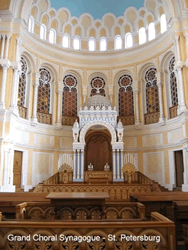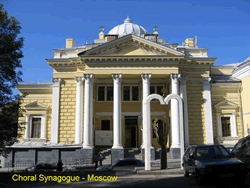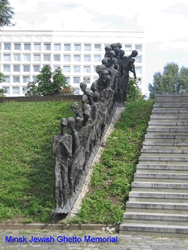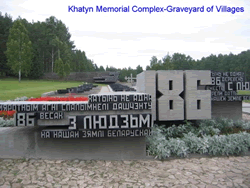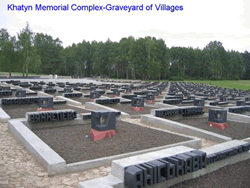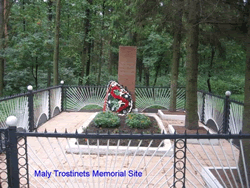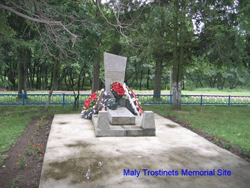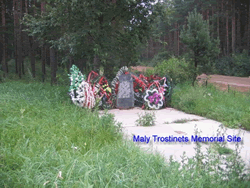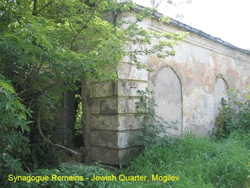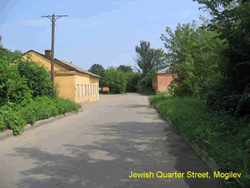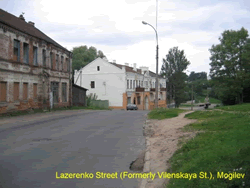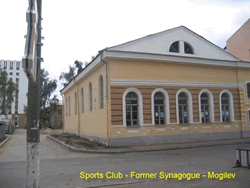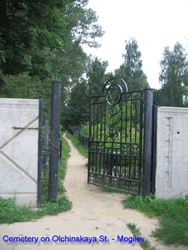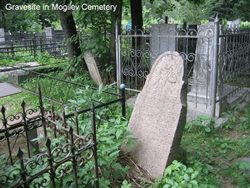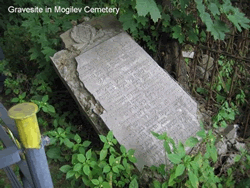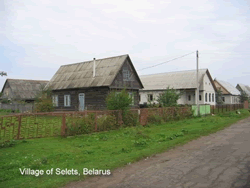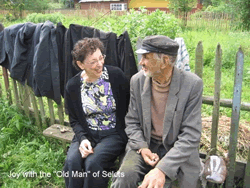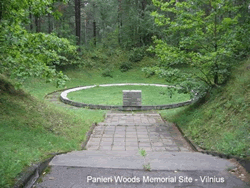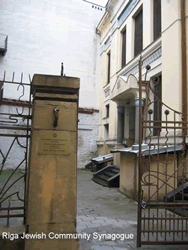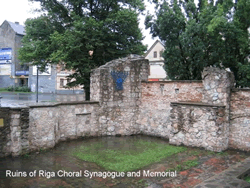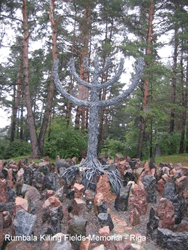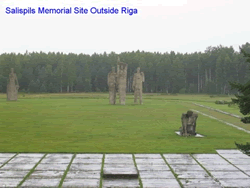Report of Our Visit to Belarus, Lithuania, Latvia, Estonia and Russia
August, 2005
Minsk, Belarus
We departed Atlanta, GA, on the afternoon of Tuesday, August 2nd , arriving in Minsk, Belarus at 1:05 PM on the following day with a short stop in Frankfurt..
We were met at the airport as prearranged, and taken to Hotel Minsk, our residence for the next few days. The hotel was great by Belarus standards.
After checking in and getting acclimated, we were met at our hotel by our host Yuri Dorn, who is affiliated with the Union of Religious Jewish Congregations in the Republic of Belarus, the Jewish Revival Charitable Mission, the Jewish Heritage Research Group of the Republic of Belarus. He is also the Co-chairman of the Committee for the Preservation of the Memory of Holocaust Victims in the Republic of Belarus.
We were joined by translator/guide Bella Velikovskiai, and Oleg Kosov, of the Jewish Heritage Research Group of the Republic of Belarus, who provided a car for our visit.
Our first visit was to the Minsk Archives to view some of the birth, marriage and death listings for my ancestors who resided in the area around the city of Mogilev. It was prearranged that specific volumes would be available for our review, but in fact, many were incorrectly gathered and the logistics of getting the correct ones proved too difficult so we cut the visit short.
We went next to the Jewish Community Center (Minsk Jewish Campus) where we toured the large modern facility and observed the Jewish renewal programs and displays of wonderful artwork prepared by its clients. The director, who was very enthusiastic about what they do here, took us around and at one point insisted that we take a piece of artwork for a remembrance. The facility is funded by the Conference on Jewish Material Claims agaist Germany, The American Jewish Joint Distribution Committee, ORT and the Jewish Federations of Atlanta, Philadelphia and others.
We made a short visit to the Museum of Jewish History where we saw a large collection of photographs and objects covering the periods before and during the war.
We ended the day with a great dinner at Yuri’s home with his wife Irina and son Seva.
The next morning we toured Minsk with Bella and Oleg, concentrating on the ghetto area and other Jewish aspects of the city. We paused at the Minsk Jewish Ghetto Memorial know as Yama – the pit where 5,000 were murdered on 3/4/42. Along the stairs into the pit is a haunting procession of larger than life black abstract figures of victims being led to their death.
We next rode the Metro, which we like to do when in foreign countries. It was grand and sheathed in marble, a hint as to what they will be like as we progress to Moscow. This was followed by lunch at the Synagoge where we had soup, salad, baked fish with pasta and dessert, along with the several members of the needy Jewish community who come there for lunch everyday.
Following lunch we drove to the Museum of Everyday Life and Architecture of the Republic of Belarus located in the tiny village of Strochitsa along the river Ptich about 12 km from Minsk, for a glimpse into early life in the region. Here we saw a large collection of 19th Century wooden structures from around Belarus. Many were furnished and decorated to depict a specific holiday with appropriate foods on the table.
Next on the agenda was Khatyn, a hamlet 60 km from Minsk which was burned with all of its inhabitants in a 1943 Nazi reprisal. The site is now a sobering memorial centered around a sculpture of Yuzif Kaminsky, the only survivor. Other aspects include the Graveyard of Villages which commemorates the Nazi destruction of 185 other Belorusian villages. Concrete posts simulating trees of life commemorate an additional 433 destroyed but rebuilt villages. A memory wall lists the Nazi concentration camps in Belarus as well as some of their victims. The utter silence of the site is broken only by intermittent sounding of single bells located around the complex. This was a truly moving experience.
Visit to Mogilev
During an early morning drive from Minsk we stopped at the Maly Trostinets Memorial Complex located on the site of a former concentration camp. No camp elements remain, but there are three modest memorial sites to visit.
We then continued on to Mogilev, the birthplace of my parents and earlier generations. My parents, the last of the family to leave, emigrated to the US in 1923 in the midst of a revolution, but long before WW II.
It was Friday, a popular day for weddings and the Municipal Wedding Palace was in full swing. Decorated cars with wedding parties were waiting in long lines. After exiting the building there are photos to be taken on the steps before driving off to parties.
We met up with Alexander Litin and his associate Ida Shenderovich, who are experts on the Jewish history of the city. We visited the areas of old Mogilev where Jews historically lived. While very little remains, through pictures and spot observations we got a good idea of how things were before the war. We searched the Jewish Cemetery, which is overgrown and in poor condition, for traces of my family but found none. Many stones were fallen, some face down, and many required rubbing with a wire brush to decipher the inscriptions.
We overnighted at the Hotel KIM and took some time the next morning to explore new Mogilev. We searched high and low for Kvas, a popular beverage of fermented rye bread. After finding it at the department store we took a kvas break on the spot. It is a taste that one must acquire – oh well, we tried it.
After leaving Mogilev we stopped in the nearby village of Selets, the birthplace of my grandfather. We talked to locals about their recollection of Jewish families in the village. They directed us to an “old man” who could be found sitting on a bench in his yard on the next street, whom they thought would remember. It turns out that this old looking man was not that old – younger than some of us, and recalled nothing. We chatted and took some pictures with him and departed for Minsk.
Return to Minsk
After our return to Minsk and a leisurely stroll down Skoryny Street, to see some shops and a department store, we headed to Yuri Dorn’s dacha in the village of Palachanka for dinner, a fitting end to our visit to Belarus.
Vilnius, Lithuania
We arrived in Vilnius by train from Minsk mid morning. We were met at the train by Regina Kopilevich, our guide and her driver, and after dropping our bags off at the hotel, proceeded to see the Jewish aspects of the city.
In Vilnius we visited the Center for Tolerance, the Jewish Cemetery, the Jewish State Museum of Lithuania, the Taharit Hakodesh Synagogue (which is closed due to disagreement among the Jewish population as to what type of shul it is to be), the medieval Jewish Quarter and the Ghettos. Regina pointed out the location of the ghetto enclosure walls and gates as we walked.
We then drove 10 km outside the city to the Jewish Memorial at Ponar (“Ponary”, Panieri Woods Death Camp) dedicated to the 70,000 Jews and 100,000 Soviet citizens who were murdered and burnt here by the Nazis and their collaborators between 1941 and 1944. The site consists of a series of pits, which where originally planned for construction of tanks for storage of fuel for the war effort, but used instead for the disposal of corpses which were later exhumed and burned to dispose of the evidence.
That evening we joined our group for a tour of the Baltic countries which after a few days in Vilnius was to take us by coach to Riga, Latvia, Tallinn, Estonia and then to St. Petersburg where we are to join a river cruise to Moscow.
While on an excursion to Trakai, residence of the Grand Dukes of Lithuania, we visited a 14th Century castle and saw the Karaite Synagogue.
Riga, Latvia
After a morning tour of the old city and a survey of beautifully restored Art Nouveau buildings with our tour group, we met with Aleksandr Feigmanis, who guided us through the Jewish aspects of Riga. We visited the Jewish Quarter, site of the Riga Ghetto, the Pietav Synagogue as well as the Memorial at the ruins of the Big Choral Synagogue.
After a stop at the Jews in Latvia Museum, with its vast collection of photographs and memorabilia, we visited two memorial sites outside of Riga. First was the Rumbala Killing Fields Memorial, site of killings of thousands of Jews from the Riga Ghetto, where grassed burial mounds are demarcated by granite curbs and numerous creative memorials and sculptures have been erected. We then visited the Salaspils Memorial concentration camp site about 20 km from Riga. The principal purpose of the camp was for transportation of victims to larger Nazi camps. Large scale structures, the walkway described as “the Way of Suffering” and sculptures with titles such as “the Unbroken”, “Humiliated”, “Mother”, and “Solidarity”, presented a very emotional tone to the site.
Back in Riga, we attended an evening organ concert of Bach, Mozart and Mendelsohn at the grand Dome Cathedral.
Tallinn, Estonia
During a lull in group tour sightseeing, we managed sneak off to see the temporary location of the only synagogue in the city. We met the Rabbi, put a few dollars into the collection box, and saw the plans for an impressive new facility.
St. Petersburg, Russia
Upon arrival in St. Petersburg we boarded the M.S. Litvinov, our home for the next 15 days. We stayed in port for four nights before departing for Moscow and stops in between. During all of our free time, we went around town privately with Andrey Vereschagin. In addition to the usual tourist sites not covered by the cruise excursions, we were taken to the Russian Museum to see an extensive exhibit of Marc Chagall work.
While at Pushkin to see the Catherine Palace we made a stop at the nearby Jewish Holocaust Victims Monument including a work by Jewish sculptor Vadim Sidur entitled “The Formula of Sorrow”, comprised of abstract letters “J” and “D” denoting the word Jude.
We visited the beautifully restored Grand Choral Synagogue built in 1870 in the Moorish style. We observed a seat plaque with our Kagan family name on it. There was a separate wedding chapel with a golden chuppa.
We were privileged to be able to see a ballet performance at the legendary Mariinsky Theater, which is normally dark during the month of August. The Boris Eifman Russian traveling company performed Minkus’ Don Quixote.
Russian River Cruise
From St. Petersburg we traveled east along the Neva River into Lake Lagoda, Europe’s largest lake, then along the Svir River, stopping at Svir Stroy, a quaint riverside village. While ashore, we were graciously invited into several villager homes for pastries, caviar, herring, vodka, etc., with the expectation of a few Rubles in return.
Continuing along the Svir River into Lake Onega, Europe’s second largest lake, we made a stop at Kizhi Island, the site of an open air museum of 18th century wooden buildings.
Sailing from Lake Onega through the Volga-Baltic Waterway, traversing 7 locks, we arrived at Goritsy (Kirillov), a typical farming village and site of a major monastery.
Aditional stops were made at the Golden Ring cities of Yaroslavl, Kostrama and Uglich before traveling the Moscow Canal to Moscow.
Moscow
We stayed in port aboard ship for three nights before moving to the Hotel National, overlooking Red Square and the Kremlin, for a few extra nights. As in St. Petersburg, we went around town privately with Andrey Vereschagin, during all of our free time, using the Metro whenever possible. In addition to the usual tourist sites not covered by the cruise excursions, we were taken to house museums of Aleksandr Skrabin, Boris Pasternak, Lev Tolstoy, and Maxim Gorky.
The underground Metro stations are unlike any in the world, with extensive carved marble wall surfaces, chandeliers, mosaics, and murals, with no two stations alike.
We visited the Kitay Gorod section, the Jewish area of the city, where the Choral Synagogue and the Chassidic Synagogue are located. We saw the site of the former Jewish Chamber Theater and a monument to Sholom Aleichem. Traveling a short distance from the city center we visited the Victory Memorial (Memorial Hill) which included a memorial synagogue and Holocaust Museum.
Sadly, it was now time to go home.
Sheldon Cohen
Marietta, GA
USA
#min_rep-1: |
#min_rep-2:
|
#min_rep-3:
|
#min_rep-4:
|
#min_rep-5:
|
#min_rep-6:
|
#min_rep-7:
|
#min_rep-8:
|
#min_rep-9:
|
#min_rep-10:
|
#min_rep-11:
|
#min_rep-12:
|
#min_rep-13:
|
#min_rep-14:
|
#min_rep-15:
|
#min_rep-16:
|
#min_rep-17:
|
#min_rep-18:
|
#min_rep-19: |
#min_rep-20: |
|
#min_rep-21: |
#min_rep-22: |
